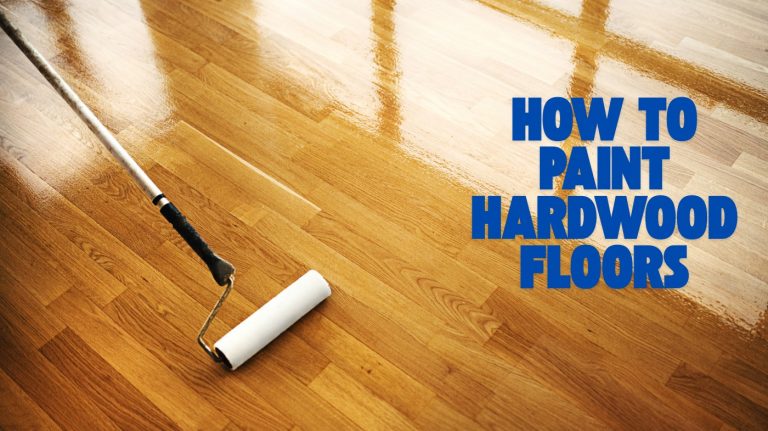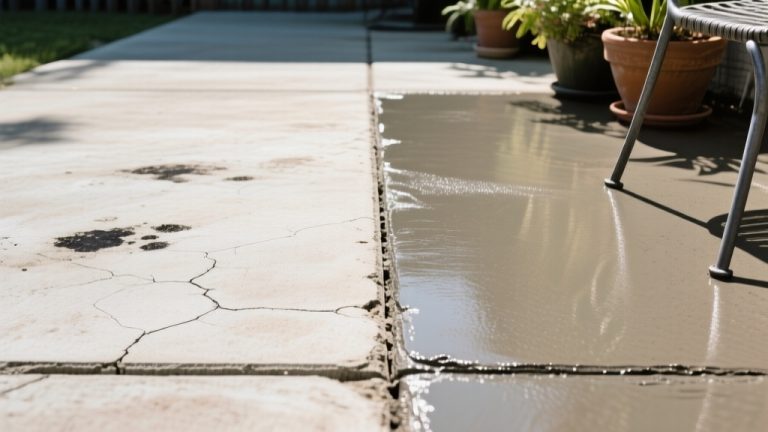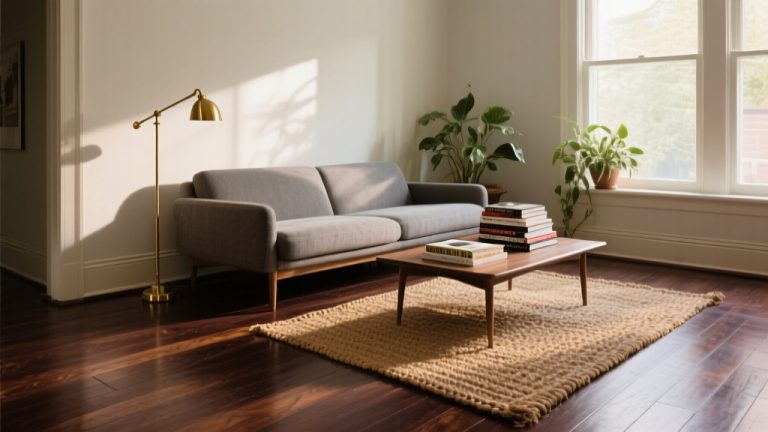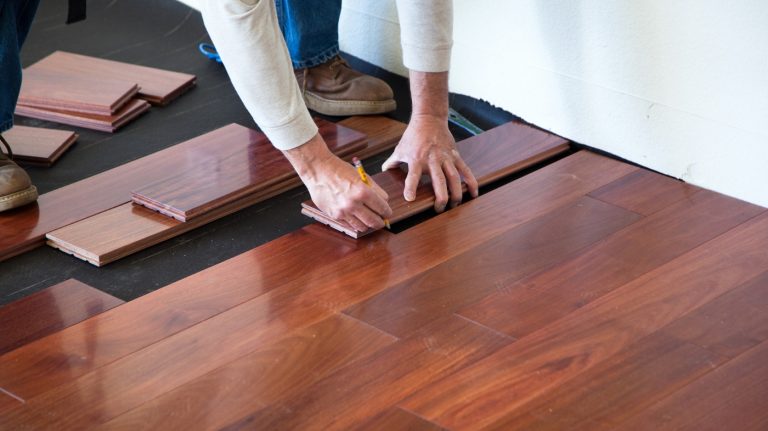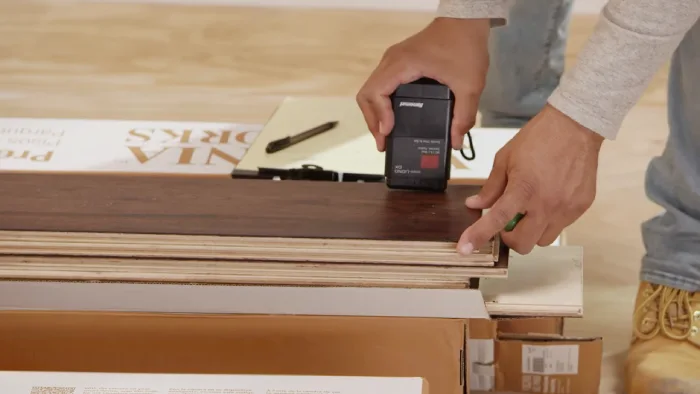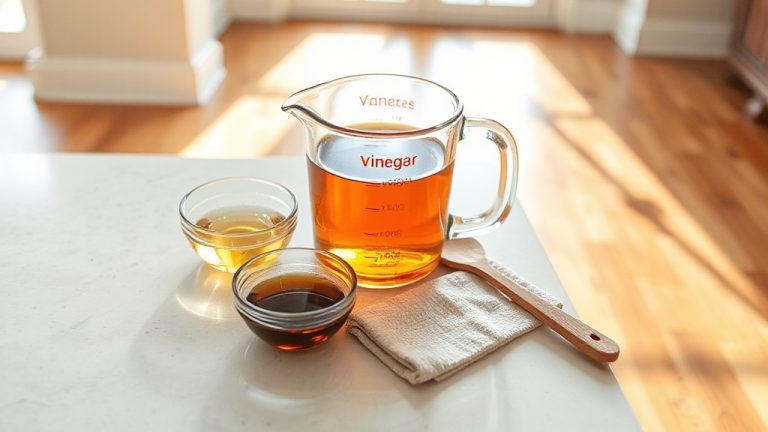Is Refinishing Hardwood Floors Worth It: Costly Mistakes
Yes, refinishing hardwood floors is worth it because it restores their natural beauty, durability, and value without the high cost of replacement.
You’ll save money, extend the floor’s lifespan, and enjoy a healthier home environment free from dust and allergens. Plus, refinishing boosts your home’s market appeal and return on investment.
It’s an eco-friendly choice that preserves historic charm while enhancing style. Keep exploring to discover how refinishing can transform your space and budget.
Key Takeaways
- Refinishing hardwood floors costs significantly less than replacement, offering a high return on investment of up to 147%.
- It restores natural wood beauty while protecting floors from wear, moisture, and damage, extending their lifespan.
- Refinishing improves home value by 2.5% to 6% and increases buyer appeal with well-maintained, move-in ready floors.
- The process preserves historic floor character and allows updating stain or finish to refresh a room’s style and ambiance.
- Environmentally, refinishing reduces waste and carbon emissions compared to replacement, supporting sustainability and healthier indoor air quality.
Financial Benefits of Refinishing Hardwood Floors
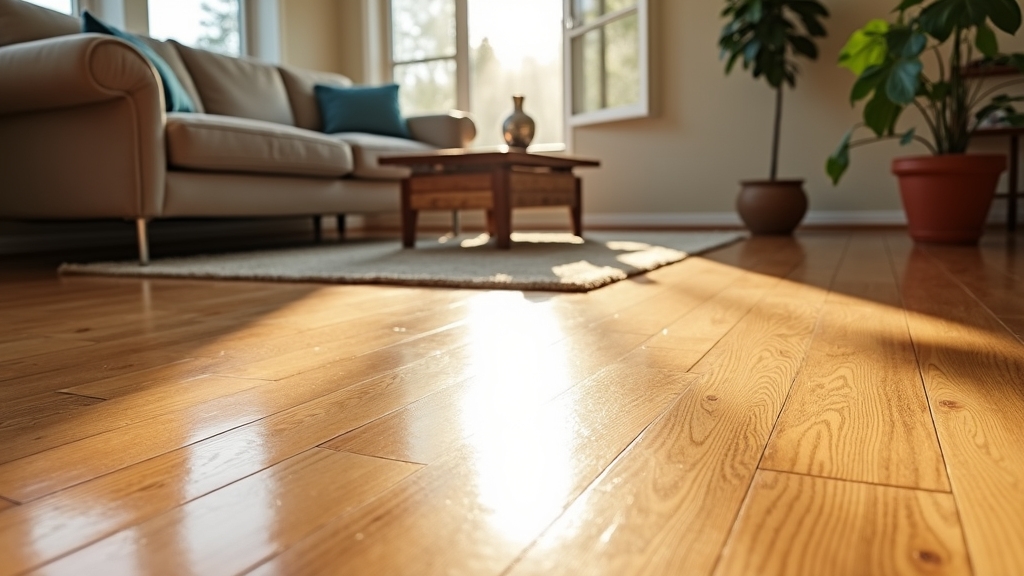
Although replacing hardwood floors might seem like the obvious choice, refinishing them offers significant financial benefits that make it a smarter investment.
Refinishing typically costs between $3 and $8 per square foot, far cheaper than the $7 to $25 per square foot for full replacement. The total cost depends heavily on the size of the floor to be refinished, so accurate measurement is essential.
This cost difference means you save money upfront while maintaining your home’s value. Small fixes for hardwood floor repairs can cost as low as $100–$500 for 1-10 sq ft, making refinishing an affordable option for addressing minor damage.
According to the National Association of Realtors’ 2022 Remodeling Impact Report, refinishing hardwood floors delivers a strong 147% return on investment.
Plus, refinished floors boost your home’s market appeal by signaling good maintenance, attracting buyers who prefer move-in-ready properties. Financing options also make managing the cost easier.
Long-Term Advantages of Refinishing
When you refinish hardwood floors, you not only restore their beauty but also substantially extend their lifespan. Refinishing removes surface damage like scratches and stains, revealing the wood’s natural grain and allowing customization with new stain colors.
It adds a durable protective layer that shields your floors from wear, moisture, and dents, profoundly enhancing durability. This process preserves the structural integrity of the wood, preventing warping and damage to the subfloor. Plus, it simplifies maintenance by creating a smooth, sealed surface that resists stains and makes cleaning easier.
Additionally, refinishing helps eliminate dust, allergens, and harmful chemicals associated with old finishes, thereby creating a healthier living environment through sealing and stripping. Choosing hardwood species with higher Janka hardness ratings can further increase the longevity and resistance of your refinished floors.
Impact on Home Value and Appeal
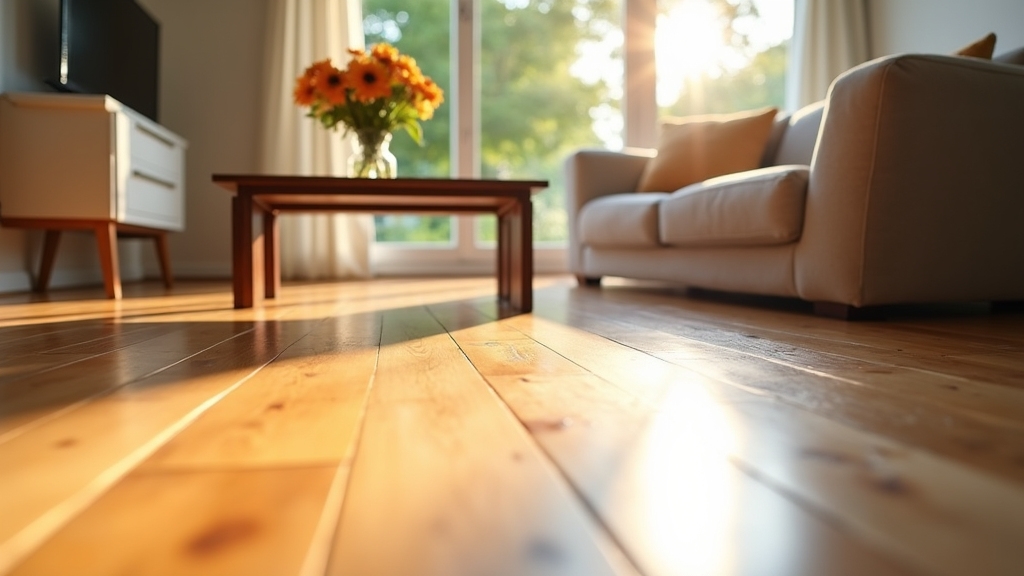
Refinishing hardwood floors is a fantastic way to increase your home’s market value. You might be surprised to learn that you can often recoup more than what you spend on the project!
According to the National Association of REALTORS®, hardwood flooring offers one of the highest returns on investment among flooring types. Proper refinishing removes old finishes and imperfections, restoring the natural beauty and providing a long-term durable surface that appeals to buyers.
Buyers just can’t resist the timeless beauty and polished look that come with refinished floors. It really makes your home stand out in the market.
And let’s not forget about the character of your property. When you preserve those historic floors, you’re keeping the essence of your home intact.
This is a huge plus for buyers who’ve an eye for authenticity and appreciate the charm of older homes. It’s a win-win all around!
Increased Market Value
Because refinishing hardwood floors can deliver an impressive return on investment, often around 147%, you’ll find that spending on this upgrade directly boosts your home’s resale value by thousands of dollars.
This improvement typically increases your home’s price by 2.5% to 6%, depending on the market. Refinishing also signals well-maintained quality, which buyers appreciate, enhancing your property’s appeal and long-term value.
Additionally, buyers favor hardwood floors for their durability and easier maintenance, which further elevates the attractiveness of homes with refinished floors. Maintaining that polished look is easier when using eco-friendly hardwood floor cleaners that preserve the finish and protect the wood.
Here’s a quick snapshot of how refinishing impacts market value:
| Investment Cost | Estimated ROI | Value Added to Home |
|---|---|---|
| $2,000 | 147% | $2,940 |
| $3,000 | 147% | $4,410 |
| $4,000 | 147% | $5,880 |
| $5,000 | 147% | $7,350 |
| $6,000 | 147% | $8,820 |
Buyer Attraction Benefits
How much does refinishing hardwood floors influence buyer interest? Quite significantly. About 72% of buyers prefer hardwood floors, viewing them as a “must-have” feature that sparks an emotional connection.
Refinishing your floors boosts this appeal by presenting a well-maintained, move-in ready home. This reduces buyer hesitation and inspection concerns. Using materials like fire retardant plywood during refinishing can also enhance safety without compromising aesthetics, adding to buyer confidence with proven fire-retardant standards.
This improvement attracts a wider buyer pool, accelerates the sale process, and enhances your home’s competitiveness in the market. According to the 2022 Remodeling Impact Report, hardwood flooring projects score high on both value and homeowner satisfaction, known as Joy Scores.
Furthermore, refinished floors create a positive first impression, signaling care and quality, which builds buyer confidence.
Their timeless aesthetic complements various design styles, helping buyers visualize personalization.
Overall, investing in refinishing can lead to multiple offers and potentially higher sale prices.
This proves that the impact on buyer attraction and home value is both practical and substantial.
Historic Floor Preservation
Although refinishing hardwood floors generally enhances a home’s appeal, preserving historic floors requires a more careful approach to maintain their unique character and value.
You need to avoid over-sanding and harsh chemicals to protect delicate features like hand-hewn edges or inlaid patterns. Light screening with a drum sander is often recommended to refresh floors without removing significant material.
Using reclaimed wood from the same period for repairs keeps authenticity intact. It is important to ensure floors are fully dried before applying any finishes or further treatments to prevent damage.
Hiring skilled professionals with precision tools ensures the floor’s integrity and historical accuracy.
By preserving original wood, you maintain architectural integrity, which boosts your home’s value and charm.
Proper restoration with traditional finishes supports long-term durability and cultural significance.
Ultimately, careful historic floor preservation not only enhances your home’s appeal but also represents a smart investment, safeguarding its unique heritage for future owners.
Cost Considerations for Refinishing
When you’re thinking about refinishing your hardwood floors, it’s super important to get a good grasp on the cost breakdown. Trust me, it’ll make budgeting a whole lot easier!
So, here’s the deal: things like labor, materials, and the current condition of your floors can really change the total price tag. For example, square footage is the most significant factor influencing the overall cost. Additionally, considering the use of adhesives for transition strips can be important if your refinishing project involves adjoining tile areas.
Whether you’re planning to hire a pro or tackle a DIY project, it’s worth comparing your options. That way, you can find the sweet spot between saving some cash and still getting great results.
Refinishing Cost Breakdown
Breaking down the cost of refinishing hardwood floors helps you make informed decisions about your project budget. Expect to pay $3–$8 per square foot for professional refinishing, including sanding, staining, and finishing. Applying protective treatments during refinishing can also help preserve the wood’s durability and appearance.
Dustless methods cost more, around $5–$8 per square foot, due to specialized equipment.
Smaller rooms (50 sq ft) range from $150–$400, while whole-house projects typically cost $1,800–$6,000. Larger areas benefit from lower per-square-foot rates.
Wood type impacts costs: common woods cost less, while dense or exotic types require more labor and care, raising prices.
Labor can represent up to 80% of the total.
Optional staining adds $1–$3 per square foot.
Additional repairs and move-out fees may increase expenses. Repairing damaged floors can add $200 to $600 to your budget depending on the extent of the damage repairing damaged floors.
Understanding these factors guarantees you budget realistically and avoid surprises.
DIY Versus Professional
Deciding between DIY and professional refinishing hinges largely on your budget, skill level, and desired outcome.
If you’re comfortable with tools and willing to invest time, DIY can save you hundreds, costing around $300 to $500 per room for materials and equipment rentals. However, it is important to note that labor rates for professionals typically range from $60–$160 per hour, which significantly influences total project costs. Keep in mind that improper sanding or finishing during a DIY project can lead to floor damage requiring costly repairs.
However, expect a steep learning curve and risk of errors without experience.
Hiring professionals costs more, typically $3 to $8 per square foot, but offers expert craftsmanship, faster completion, and often a warranty.
Labor makes up most of the cost, but you gain convenience and high-quality results that can boost your home’s value.
Choose DIY if you want control and cost savings; go professional for guaranteed finishes, complex jobs, and time efficiency.
Comparison Between Refinishing and Replacement
Although both refinishing and replacement can restore your hardwood floors, they differ considerably in cost, time, and impact.
Refinishing is more cost-effective, costing $3–$8 per square foot, while replacement ranges from $6–$25. Proper protection of baseboards during refinishing can help achieve a seamless, professional look without unnecessary damage.
Refinishing takes less time, typically 3 to 5 days plus curing, compared to the longer process of demolition and installation for replacement.
However, replacement addresses severe damage and offers full customization, unlike refinishing, which refreshes the surface and color.
Refinishing also extends the lifespan of floors by sealing against water, scuffs, and scratches, helping to preserve the wood for many years. This makes it a cost-effective option for maintaining your existing flooring.
| Aspect | Refinishing | Replacement |
|---|---|---|
| Cost | $3–$8/sq ft | $6–$25/sq ft |
| Time | 3–5 days + curing | Longer due to demolition & install |
| Customization | Surface color and finish only | New wood type, layout, style |
Environmental and Health Benefits of Refinishing
When you choose to refinish your hardwood floors, you not only enhance their appearance but also contribute to significant environmental and health benefits.
Refinishing conserves natural resources by reducing the need for new lumber, cutting carbon emissions by up to 79% compared to replacement.
Refinishing saves natural resources and cuts carbon emissions by up to 79% versus new flooring installation.
It minimizes waste, keeps old boards out of landfills, and consumes less energy than manufacturing new floors. Wood floors are biodegradable, which helps reduce landfill impact when they eventually reach end-of-life.
You’ll also improve indoor air quality since hardwood resists allergens and dust better than carpets.
Modern eco-friendly finishes reduce chemical exposure, supporting a healthier living space.
Techniques like dustless sanding and water-based finishes further lower environmental impact.
Practical Tips for Homeowners Undertaking Refinishing
If you’re planning to refinish your hardwood floors yourself, it’s important to understand the key steps and considerations involved to guarantee a successful outcome.
Start by removing baseboards and preparing the area to control dust with plastic sheeting. Seal air vents and doors to prevent dust spread throughout your home during sanding.
Use proper sanders; begin with coarse grit and progress to finer grits to avoid imperfections. Don’t skip any grit levels.
Wear a respirator, and thoroughly vacuum and wipe surfaces with tack cloths before applying your chosen finish.
Select a finish that suits your needs; water-based dries faster, oil-based offers durability.
Apply finishes evenly and allow full curing time before use.
Avoid common mistakes like poor dust removal or ignoring manufacturer instructions.
Finally, maintain your floor regularly with gentle cleaning and humidity control to extend its life.
Enhancing Aesthetic Appeal Through Refinishing
Because refinishing removes surface imperfections like scratches and stains, it reveals the natural beauty and grain of your hardwood floors, instantly revitalizing their appearance.
By sanding away dullness and damage, refinishing restores the floor’s original luster, enhancing your home’s warmth and charm.
You can also update the stain or finish to match your evolving style or current design trends, making rooms appear brighter and more inviting. This process provides a high-impact, low-cost home makeover that significantly enhances your living space without a hefty investment.
This process creates a smooth, polished surface that elevates the overall ambiance and ties new decor elements together seamlessly.
Plus, a fresh, reflective finish enhances light, improving space perception.
Ultimately, refinishing not only boosts visual appeal but also increases your home’s market value, making it a smart investment for both daily enjoyment and future resale.
Frequently Asked Questions
How Long Does the Refinishing Process Typically Take From Start to Finish?
The refinishing process typically takes 3 to 5 days for an average-sized room.
You’ll spend time sanding, often 2 to 3 passes plus detailed edging, followed by stain application if you want color, which adds a day.
Then, applying 2 to 3 finish coats with drying intervals can take several more days.
Keep in mind, full curing before heavy use or moving furniture back can extend the timeline up to a week.
Can Refinishing Hardwood Floors Fix Deep Scratches or Gouges?
Absolutely, refinishing hardwood floors can erase deep scratches and gouges like magic!
By sanding down the entire surface, you remove not just surface damage but also imperfections hiding beneath.
This process evens out wear and restores your floor’s original beauty seamlessly.
While spot repairs can help minor damage, refinishing is your go-to for serious issues, giving your floors a fresh, uniform look that touch-ups just can’t match.
What Types of Finishes Are Available for Refinished Hardwood Floors?
You can choose from several finishes for refinished hardwood floors. Water-based polyurethane offers a clear, eco-friendly finish with quick drying.
Oil-based polyurethane provides a durable, warm amber tone but takes longer to dry. Natural options like wax, shellac, or hard wax oil give a classic look but need more upkeep.
For high-traffic areas, consider aluminum oxide finishes; they’re extremely durable but harder to repair.
Your choice depends on durability, appearance, and maintenance preferences.
Is It Safe to Stay at Home During the Refinishing Process?
You’ll want to treat refinishing as a mini vacation away from home.
Staying inside during sanding and finishing exposes you to dust and fumes that can irritate your lungs and cause headaches.
It’s best to vacate until the floors cure and VOC levels drop, especially if you have kids, pets, or respiratory issues.
Proper ventilation helps, but to keep safe and comfortable, plan to be elsewhere until the process fully settles.
How Soon Can Furniture Be Moved Back After Refinishing?
You can usually move furniture back 24 to 48 hours after refinishing, depending on the finish type. Water-based finishes dry faster, so you might wait closer to 24 hours. Oil-based finishes need more time to dry.
Keep humidity and temperature in mind; they affect drying time. Use felt pads on furniture legs and avoid dragging pieces to protect your floor.
For full curing, which takes up to 30 days, keep precautions in place.
Avoid Costly Mistakes: Follow Manufacturer Guidelines Before You Pour
Refinishing your hardwood floors is like giving your home a fresh coat of confidence. It boosts value, extends lifespan, and improves appeal without the hefty cost of replacement.
By choosing refinishing, you save money, support the environment, and enhance your living space’s health and beauty. With the right approach, you’ll enjoy durable, stunning floors that pay off both practically and financially.
It’s a smart investment that truly stands the test of time.


